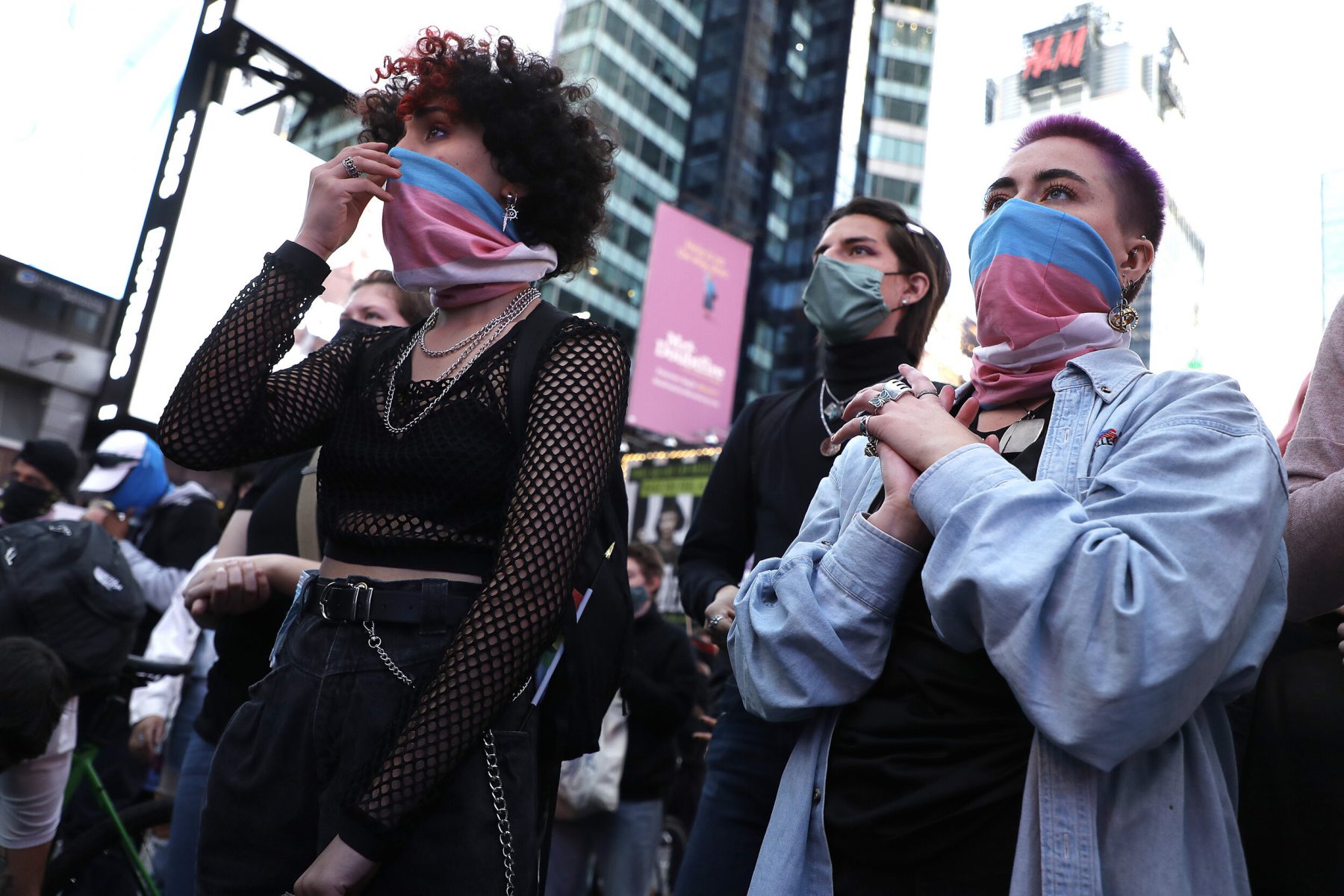
Seven years after TIME declared a transgender tipping point, trans people are in the news — and the public eye — more than ever before. But hyper-visibility can do more harm than good: State lawmakers have introduced at least 67 anti-trans bills in 2021 alone, several of which have already become law. And at least 44 trans people, mostly Black trans women, were murdered in the U.S. in 2020, making it the country’s worst year on record for transgender violence.
Since millions of cisgender people don’t have close trans friends or family members, the press plays a critical role in shaping the way that the public conceptualizes trans issues.
“Trans people have become a lightning rod… and the way we are covered directly impacts the wellbeing of our community,” said freelance journalist Britni de la Cretaz, whose bylines include The Atlantic and the New York Times.
Unfortunately, many reporters lack the knowledge and experience to tackle trans topics with the nuance and sensitivity that they require. The good news? There’s always time to learn. Next time you’re reporting on a trans-related topic or speaking with a trans source, consider the following tips:
Center trans perspectives.
You may be surprised to realize how many stories about trans politics don’t include trans voices. But it doesn’t have to be that way. In de la Cretaz’s recent InsideHook story about trans boy athletes, for example, all but one of the 11 sources and subject matter experts are trans-masculine.
“A cis journalist told me that she realized that, often, the stories she read about trans athletes were about what cis people thought about trans people being able to participate, instead of hearing from trans people about how they were impacted,” de la Cretaz said. “It changes the stakes of the storytelling.”
Mirror your subjects’ language.
No matter who you’re speaking to, it’s good practice to check in about pronouns, identity terms and gendered language, rather than making assumptions based on name or appearance. “If you didn’t know someone’s age or title, you would just ask them to confirm,” said Harron Walker, a freelance journalist and W columnist. “It’s the same thing.” In addition to double-checking pronouns, Walker suggests asking questions like “How would you describe yourself in terms of gender (or race or sexuality)?” and “Are there any terms you don’t use to talk about yourself?”
Mind your business.
While it’s important to clarify what language your subjects use for themselves, it’s also critical to identify what personal details aren’t relevant or appropriate. Cis reporters often ask trans people intrusive questions about their bodies, medical histories, childhood trauma and even sex lives. When in doubt, ask yourself, “would I ask a cis subject this question?” or “would I be OK with someone asking me this question?”
Find a new plot.
Hundreds of existing articles, memoirs and essays already explain the basics of social and medical gender transition. When you’re writing about a trans person, look beyond their mere existence and find a more interesting, newsworthy hook that will captivate cis and trans audiences alike.
Trust your audience.
Many journalists err on the side of over-explaining terms like “nonbinary” and “they/them pronouns.” These explanatory commas and parentheticals subtly send the message that trans identities are niche, foreign or esoteric. Trust your audience to understand basic gender concepts and to Google anything they’re unfamiliar with.
Don’t fall for false equivalences.
Trans advocates “are often put up against people who don’t believe in our basic humanity, and those two viewpoints are being offered up as ‘both sides,’” de la Cretaz said. Presenting multiple perspectives is important to any story, but rather than platforming anti-trans hate groups, consider speaking with multiple trans people who disagree with each other.
Let trans people be people.
Walker observes that writers sometimes project their ideas of “how all trans people are” onto their sources, creating generic, one-dimensional characters. “Whether it’s viewing us all as victims or fragile little babies or incredible diva goddesses, it can still be dehumanizing,” she said. “Humans are famously complex, and trans people are famously human.”
Collaborate.
If you’re cisgender, do whatever you can to get another pair of eyes on your story. Can you co-byline with a trans colleague, or even pass the opportunity to a trans freelancer? (Keep in mind that trans journalists face high levels of unemployment and discrimination due to, you guessed it, transphobia.) Is there room in the budget for a trans sensitivity reader — and if not, are you able to pay for one out of your own pocket?
For additional guidance on improving trans coverage, refer to the Trans Journalists Association’s online style guide. The TJA (which I’m a founding member of) can also connect media professionals to qualified trans writers, editors, educators, sensitivity readers and other resources.



